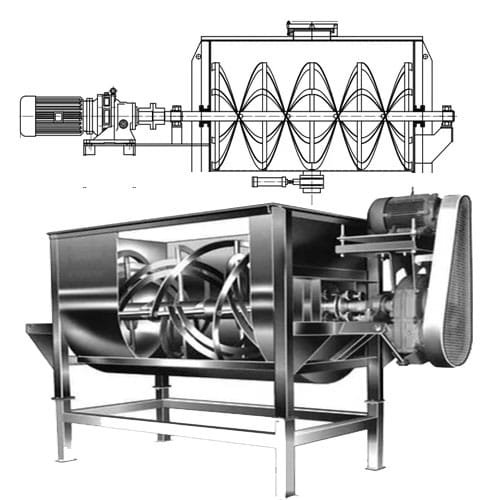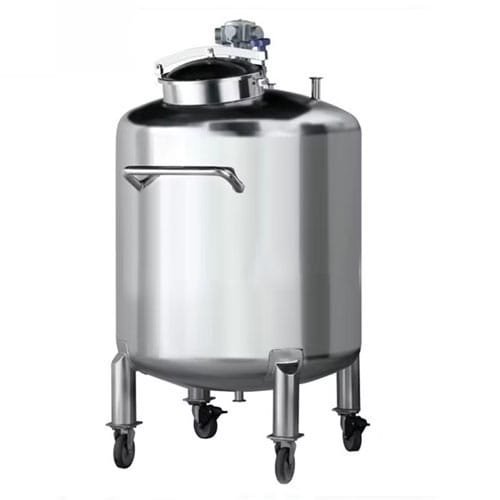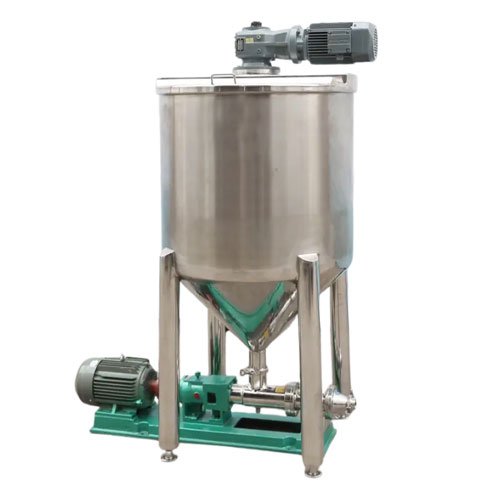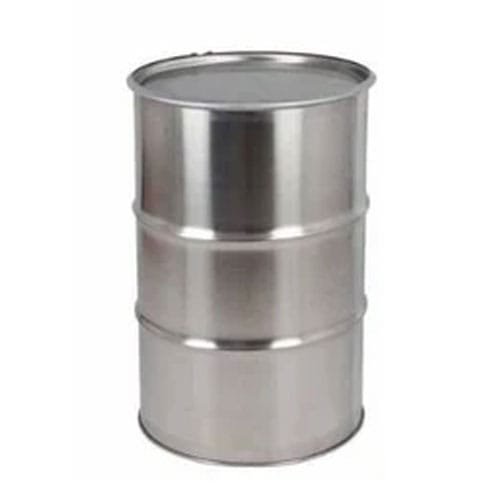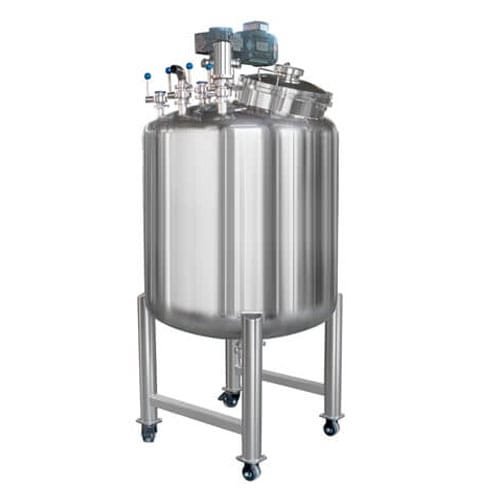The Rapid Mixer Granulator (RMG) is a key piece of equipment in the pharmaceutical, chemical, and food industries, used for the efficient blending of powders and granulation of raw materials. The RMG combines the processes of mixing, granulating, and agglomerating materials to form uniform and homogeneous granules, which are necessary for further processing or tablet production. The RMG ensures the consistent quality and uniformity of the final product, making it a critical component in the production of high-quality tablets, capsules, and other solid-dose forms.
Product Overview
The Rapid Mixer Granulator is a high-speed, versatile machine designed to mix, blend, and granulate powders effectively. It typically consists of a mixing bowl, high-speed impeller, and chopper blades, which together facilitate the thorough blending of raw ingredients and their subsequent granulation.
- Model Types: Available in various models depending on batch size and operational requirements.
- Batch Size: Capable of handling different batch sizes, from small-scale laboratory models to large industrial-scale machines.
- Applications: Widely used in pharmaceutical manufacturing, food processing, chemical engineering, and other industries requiring uniform granules.

Working Principle of the Rapid Mixer Granulator
The process of rapid mixing and granulation in an RMG is typically divided into several stages: mixing, granulation, and discharge. Below is a step-by-step explanation of how the machine functions.
Loading of Materials
The process begins by loading the raw materials into the mixing bowl. These raw materials are usually powders, which may include active pharmaceutical ingredients (APIs), excipients, fillers, binders, and other ingredients based on the application. The quantities and proportions of materials are crucial for achieving a uniform blend.
Mixing of Powders
Once the materials are loaded, the impeller begins rotating at a high speed. The impeller’s rotating motion creates a force that circulates the materials within the mixing bowl. The high-speed mixing ensures that the powders are uniformly distributed and prevents any segregation or settling of ingredients. This phase of the process is vital for achieving a consistent powder blend before granulation.
During this stage, the shear forces generated by the impeller also break down large particles and help reduce the size of the powder aggregates, allowing for a more efficient granulation process.
Granulation (Binder Addition)
Once the powders are well-mixed, the liquid binder is introduced through the liquid spray system. The binder could be water, alcohol, or other solvents, depending on the formulation’s requirements.
The impeller continues to rotate at high speeds, and the binder is evenly distributed onto the powders. As the binder is added, the powders start to adhere to each other, forming wet granules. The chopper blades also come into action during this step. They help break up any lumps of material and contribute to forming granules of uniform size. This granulation process enhances the powder’s flow properties, making it easier to compress into tablets or encapsulate into capsules.
The key here is the precise control of the binder addition, as excessive liquid can lead to overly wet granules, while too little binder will result in weak and poorly formed granules.
Chopping for Uniform Granules
The chopper plays a crucial role in the granulation process. As the granules begin to form, the chopper rotates at high speed and cuts any oversized or irregular granules into smaller pieces, ensuring that the final granule size is consistent.
This action helps break down any clumps or lumps and aids in the formation of uniform-sized granules, which is essential for ensuring consistent tablet or capsule formulation and even drug release.
Discharge of Granules
After the granulation process is complete, the formed granules are discharged from the RMG. The granules are typically conveyed to a drying system (such as a fluidized bed dryer) where excess moisture is removed. After drying, the granules are ready for further processing into tablets, capsules, or other forms depending on the industry and application.
Cleaning and Maintenance
Once the batch is complete, the machine is cleaned and inspected to maintain hygiene and prepare for the next batch. The components are designed to be easily disassembled for cleaning, and the smooth surface design ensures that residues are removed efficiently.

Features of the Rapid Mixer Granulator (RMG)
The Rapid Mixer Granulator (RMG) is a highly efficient and versatile piece of equipment widely used in the pharmaceutical, chemical, food, and cosmetic industries for the mixing and granulation of powders. The RMG combines the processes of mixing and granulation into one compact unit, improving productivity, consistency, and overall product quality. Below are the key features of a Rapid Mixer Granulator:
High-Speed Mixing and Granulation
- Dual Functionality: The RMG offers both mixing and granulating functions, combining these processes into a single machine. This significantly reduces the need for multiple pieces of equipment, streamlining production.
- High-Speed Impeller: The high-speed impeller efficiently mixes powders and liquids, ensuring thorough blending of ingredients. This allows for a more uniform distribution of active ingredients and excipients.
- Uniform Granulation: The granulation process ensures that particles are agglomerated into consistent granules, which are critical for achieving uniform quality in tablet or capsule formulations.
Precise Control Over Process Parameters
- Adjustable Speeds: The speed of the impeller and chopper can be adjusted according to the material characteristics, providing flexibility in the granulation process. This helps optimize granule size and consistency.
- Liquid Addition Control: The system allows precise control over the addition of binders or liquids, ensuring an even and consistent application of binder to powder. This control minimizes variations in granule size and moisture content.
- Process Monitoring: Modern RMGs come equipped with digital control panels or PLC systems that allow operators to monitor and adjust key parameters such as mixing time, speed, and binder addition in real-time.
User-Friendly Interface
- Simple Operation: The equipment is designed for easy operation, typically featuring a touch-screen control panel with user-friendly interfaces. Operators can easily set and modify parameters with minimal training.
- Automatic or Semi-Automatic Functions: Depending on the model, RMGs may offer fully automated control, reducing the need for manual intervention during operation. Some machines offer semi-automatic features, which allow flexibility in operation and control.
- Safety Features: Safety mechanisms like overload protection, emergency stop buttons, and automatic shutoffs ensure safe operation.
Compact and Space-Saving Design
- Space-Efficient: RMGs are designed to save space in the production area, offering compact, ergonomic designs that can fit into most production lines without requiring a significant amount of floor space.
- Hygienic Construction: Most RMG models are constructed with high-quality stainless steel (SS 304/316) that ensures the machine is resistant to corrosion and can be easily cleaned, in compliance with Good Manufacturing Practices (GMP).
Energy Efficient
- Low Power Consumption: Despite operating at high speeds, RMGs are designed to be energy-efficient. This helps to reduce operational costs over time while still maintaining high production rates.
- Optimized Energy Use: The high-speed impeller and chopper ensure quick processing times, which reduces the overall energy consumption per batch of granulation.
Versatility
- Wide Range of Applications: RMGs can be used for a variety of applications, from pharmaceuticals to food and chemical industries. They are ideal for handling both cohesive and non-cohesive powders, allowing flexibility across different formulations.
- Compatible with Various Materials: The system can handle a wide variety of raw materials, including active pharmaceutical ingredients (APIs), excipients, powders, and even some sticky materials, making it versatile for a range of industries.
Improved Granule Quality
- Uniform Granule Size: One of the main advantages of an RMG is its ability to produce granules of uniform size and quality. This ensures that the final product (whether tablets, capsules, or other solid forms) has consistent dissolution rates and bioavailability.
- Enhanced Flowability: The granules formed are typically more flowable compared to fine powders, which makes them easier to compress into tablets or fill into capsules.
- Controlled Granulation: With precise control over binder addition, the granulation process can be optimized to achieve the right level of moisture content and granule strength, which is critical in pharmaceutical and food applications.
Reduced Contamination Risk
- Closed System: Many RMGs operate as a closed system, which minimizes exposure to external contaminants during the granulation process. This is particularly important in the pharmaceutical industry where cleanliness and contamination control are critical.
- Easy Cleaning: The smooth surfaces and modular design of RMGs allow for quick and easy cleaning between batches, ensuring that no residual materials contaminate subsequent productions.
Advanced Safety Features
- Overload Protection: To prevent damage to the system, the RMG is equipped with overload protection, which automatically stops the machine if any parameter exceeds the predefined limit.
- Safety Guards and Sensors: Safety guards and sensors prevent accidental injuries, while ensuring the machine operates under safe conditions.
- Emergency Stops: The machine is equipped with emergency stop buttons that allow operators to immediately halt operation in case of an emergency.
Low Maintenance and Durability
- Durable Construction: The RMG is built with robust materials, typically stainless steel, ensuring a long operational lifespan and resistance to wear and tear. This minimizes downtime and maintenance costs.
- Easy Maintenance: With parts that are easy to clean, inspect, and replace, the RMG ensures minimal maintenance effort. Regular maintenance can further prolong the equipment’s life and ensure consistent performance.
Scalability
- Suitable for Different Batch Sizes: The RMG is available in various sizes, ranging from small-scale laboratory models to large industrial machines, making it adaptable to both pilot-scale and full-scale production needs.
- Batch Flexibility: Whether for small batches or high-volume production, the RMG can handle varying batch sizes efficiently, allowing manufacturers to scale production according to market demand.
Compliance with Industry Standards
- GMP Compliant: Rapid Mixer Granulators are often designed to meet GMP standards, ensuring that they are suitable for industries such as pharmaceuticals where product consistency and hygiene are paramount.
- FDA Compliance: Many models are designed to meet the regulatory requirements of various international agencies, including the U.S. Food and Drug Administration (FDA), ensuring that the equipment is suitable for use in regulated industries.
Applications of Rapid Mixer Granulator (RMG)
The Rapid Mixer Granulator (RMG) is a highly versatile piece of equipment used across a range of industries, including pharmaceuticals, food processing, chemicals, cosmetics, and more. The ability to mix powders and granulate them into uniform-sized granules makes RMGs essential in the production of various products that require consistency, quality, and uniformity. Below are the key applications of RMG in different industries:

Pharmaceutical Industry
Granulation of Active Pharmaceutical Ingredients (APIs): The primary application of RMGs in the pharmaceutical industry is for the granulation of active pharmaceutical ingredients (APIs) and excipients. The RMG ensures that these materials are mixed uniformly and granulated to the correct size and consistency.
Tablet Manufacturing: Tableting requires uniform granules that have the right flowability and compressibility. RMGs help form granules of consistent size, which are essential for tablet manufacturing, ensuring that tablets are compressed uniformly for accurate dosage.
Capsule Filling: RMGs are used to granulate powder formulations that are later filled into capsules. The uniformity of granules produced in the RMG ensures that the capsules are filled with consistent amounts of powder, maintaining product quality and efficacy.
Powder Blending: The high-speed mixing function of the RMG is used for blending different powders before granulation. This is crucial for products that require a specific blend of active ingredients, excipients, and other materials, ensuring uniform distribution.
Sustained Release Formulations: For controlled or sustained release formulations, the granulation process provided by RMG ensures that the granules have uniform size and are formed with the right amount of binder, which controls the release of the active ingredient over time.
Food Industry
Preparation of Nutritional Supplements: RMGs are used to granulate ingredients for nutritional supplements, such as protein powders, vitamins, and other dietary supplements. The granulation process ensures that the final product has good flow properties, is easy to handle, and can be accurately dosed.
Flavor and Seasoning Granulation: In the food processing industry, RMGs help produce seasoning blends, flavors, and food additives in the form of granules. The granules produced are uniform and have improved flow properties, making them easier to package and mix into food products.
Snack Food Manufacturing: RMGs are also used for granulating powders that are then used in snack food production. For example, granulated ingredients for coating snack foods or enhancing flavor consistency can be produced using RMGs.
Chemical Industry
Production of Catalysts: In the chemical industry, RMGs are used to granulate materials for the production of catalysts, which need to have a consistent size and shape to ensure proper reactivity during industrial processes.
Fertilizer Manufacturing: RMGs are utilized in the fertilizer industry to granulate raw materials. Uniform granules in fertilizers ensure better application in agriculture, leading to more efficient soil absorption and nutrient delivery.
Polymers and Resins Granulation: In polymer and resin production, the RMG is used for the granulation of polymer powders. The granules must be of consistent size to ensure uniformity during further processing, such as extrusion or molding.
Cosmetic Industry
Cosmetic Powder Production: The cosmetic industry uses RMGs to produce granules for face powders, foundation powders, and other cosmetic products. The granulation process ensures a smooth texture and even distribution of ingredients in the final product.
Granulation of Fragrance Beads: RMGs are used in the production of fragrance beads and scented powders. These products are created by granulating materials with fragrance oils, and RMGs ensure that the fragrance is evenly distributed and encapsulated in the granules.
Agriculture Industry
Herbicide and Pesticide Granulation: The RMG is used in the agriculture industry to granulate herbicides, pesticides, and other agricultural chemicals. Granulating these chemicals ensures uniform distribution, controlled release, and better handling properties in the field.
Animal Feed Production: In the production of animal feed, RMGs are used to mix and granulate the raw ingredients. The granulated feed ensures that animals receive consistent and evenly distributed nutrients in their diet.
Plastic and Polymer Industry
Polymer Granulation: RMGs are used for granulating plastic powders or polymer materials. The granules created are later used in extrusion or injection molding to form finished products.
Production of Additives: Additives, such as stabilizers, plasticizers, and colorants, are often granulated using RMGs to ensure uniform distribution in the final plastic product.
Dye and Pigment Industry
Pigment Granulation: The dye and pigment industry uses RMGs to granulate powdered pigments, ensuring that they are uniformly mixed and easy to handle. This results in better dispersion and more consistent color when used in paints, inks, or plastics.
Detergent Manufacturing
Granulation of Detergent Powders: RMGs are used to granulate ingredients for detergents and cleaning powders. The uniformity of the granules ensures consistent cleaning performance and better flow properties for packaging and distribution.
Ceramic Industry
Glaze Granulation: In the ceramic industry, RMGs are used to granulate materials that are used for glazes and coatings. The uniform granules ensure that the coating material is consistent, resulting in high-quality ceramics and tiles.
Recycling Industry
Plastic Waste Granulation: In the recycling industry, RMGs are employed for granulating plastic waste materials. This granulation process ensures that the recycled material is ready for reuse in manufacturing new products, reducing waste and promoting sustainability.




